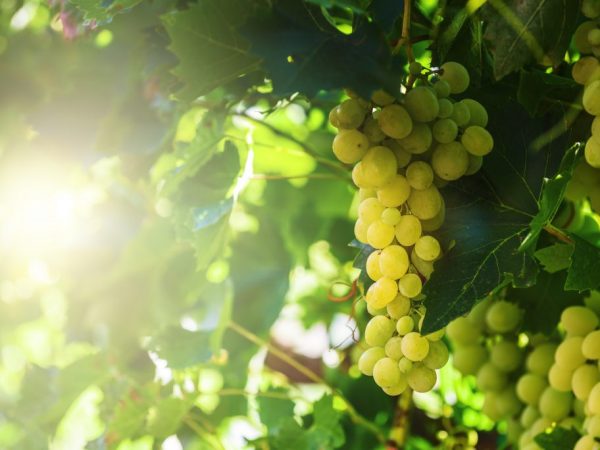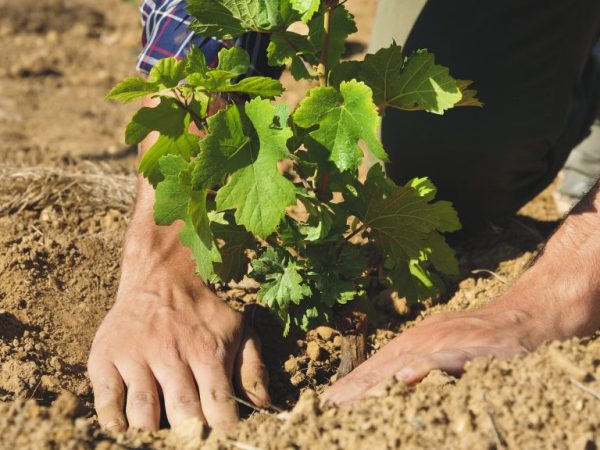Characteristics of Supaga grapes
Among the variety of varieties, Supaga grapes are distinguished by their unpretentiousness and frost resistance. Suitable for growing even for novice gardeners. Refers to early maturing species. In addition to using the fruits, the culture is planted for decorative purposes in landscape design.

Characteristics of Supaga grapes
Variety characteristic
Obtained by crossing the varieties Dvietes Zila and Madeleine Angevin. The species is common in the Baltics and in Russia. Grown on an industrial scale and in private farms. The variety is used as a pollinator for plants with female flowers.
Fruits ripen early - 115-120 days pass from the beginning of bud opening to full maturity of the bunches. They are harvested in late July - early August.
According to the description of the variety, Supaga grapes on the positive side are distinguished by the following qualities:
- gives a high yield - up to 100 kg of fruits from one bush;
- withstands temperatures up to -25˚С;
- resistant to mildew and oidium (3 points), to gray rot (3.5 points);
- perfectly tolerates transportation;
- has good compatibility with rootstocks.
The disadvantages include weak resistance to phylloxera.
Description of the bush
According to the description of the Supaga grapes, the bush is vigorous. Reaches 4 m in length. The vine grows densely, which is why it is often used to create shade. One bush occupies up to 5 m² of area. Shoots ripen quickly. The culture load is average - 30-40 eyes. The number of fruiting shoots of the Supaga Grape is 80-85%. The flowers are self-pollinated.
Description of fruits
The shape of the bunch is cylindrical. Weight 300-400 g. Berries of the same size, oval-large, weighing 3-4.5 g. Stick to each other. The color is green, becoming amber at full maturity. The skin is firm, but edible. The pulp is not slimy. The taste is labrusca. Sweetness predominates: the sugar content is 17-18%, the acid content is 5-7 g per liter.
The fruits retain their taste on the bushes for a long period. After harvesting the grapes are preserved for about a month. Consumed fresh, suitable for making wine, juices, compotes, desserts.
Growing grapes
Site selection and soil preparation
The best place for Supagi is the gentle slopes of the hills on the south side, sheltered from the winds. You should not plant a bush in a place where other garden trees grew before, as there is a risk of developing fungal diseases of the root system.

You need to plant grapes in a windless area.
The culture is undemanding to the types of soil. Sandy loam and light soils with humus are perfect for growing. It is better if they have a weak acidity (6-6.5 pH). Prepare the site in the fall. The soil is fertilized in 2 ways:
- organic feeding - manure is used (40-100 kg per 1 ha);
- mineral feeding - phosphorus and potassium preparations are used (200 kg per 1 ha).
The earth is being dug up. In the next 2-3 years, nutrients are not added.
Landing in the soil
Planting is carried out in early spring.Dig holes 60 cm deep and the same diameter. The distance between them should be 1.5-2 m. Drainage is laid on the bottom (crushed stone, gravel), on top - earth mixed with sand and humus. They hammer in a stake for a garter.
Grape seedlings are placed in water for a day. Then they take it out and put it in a hole, spreading the roots. Fall asleep with earth, watered with 3 buckets of water, mulch.
Plant care
Since the foliage of the bush is large, remove excess leaves. This will provide light access to the fruits. The plant will also be ventilated, which will prevent the development of rot. Extra brushes are removed at an early stage of the growing season.
In the spring, a bush is formed in this way:
- 6 fertile buds should remain from the earth;
- the plant should have a total of 40.
If necessary, the culture is transplanted. The species does not need shelter for the winter. In severe frosts, only young seedlings temporarily protect.
The Supaga grape variety is fed in early spring until the flowering period begins. Fertilizers are applied from 3 years after planting. Use phosphorus, potassium and nitrogen agents. Organics are used 2-3 times throughout the year. Manure or humus is great for this.
Moisten the soil 3-4 times per season in moderation. Water is introduced in several buckets gradually until it is absorbed.
Diseases and pests
The variety is immune to the most common diseases. But for the purpose of prevention, it is still worth treating plants with a 0.3% solution of copper sulfate or 1% Bordeaux mixture.
Pest control
Phylloxera is a great danger to the plant. This insect sucks out the sap of the crop, so the number of brushes is significantly reduced. Lives in soil. It spreads to the roots of the bush, from where it moves to the trunk. Swelling and rough spots appear on it. If you do not take action, the grapes die. For medicinal purposes, the following drugs are used:
- Immunocytophyte - before flowering;
- Topaz - after flowering.
To get rid of insects, in winter they use the method of flooding the culture. For this purpose, a large amount of water is introduced under the bush. The earth cannot absorb all the liquid and the plant stands in it. To prevent the invasion of phylloxera, plants are vaccinated against it during planting. Otherwise, you can lose most of the harvest.
Conclusion
Subject to all the rules for planting and subsequent care, the culture will delight you with the high quality of tasty fruits. Many people grow this variety for the purpose of sale, since the commercial qualities of the bunches are high.


